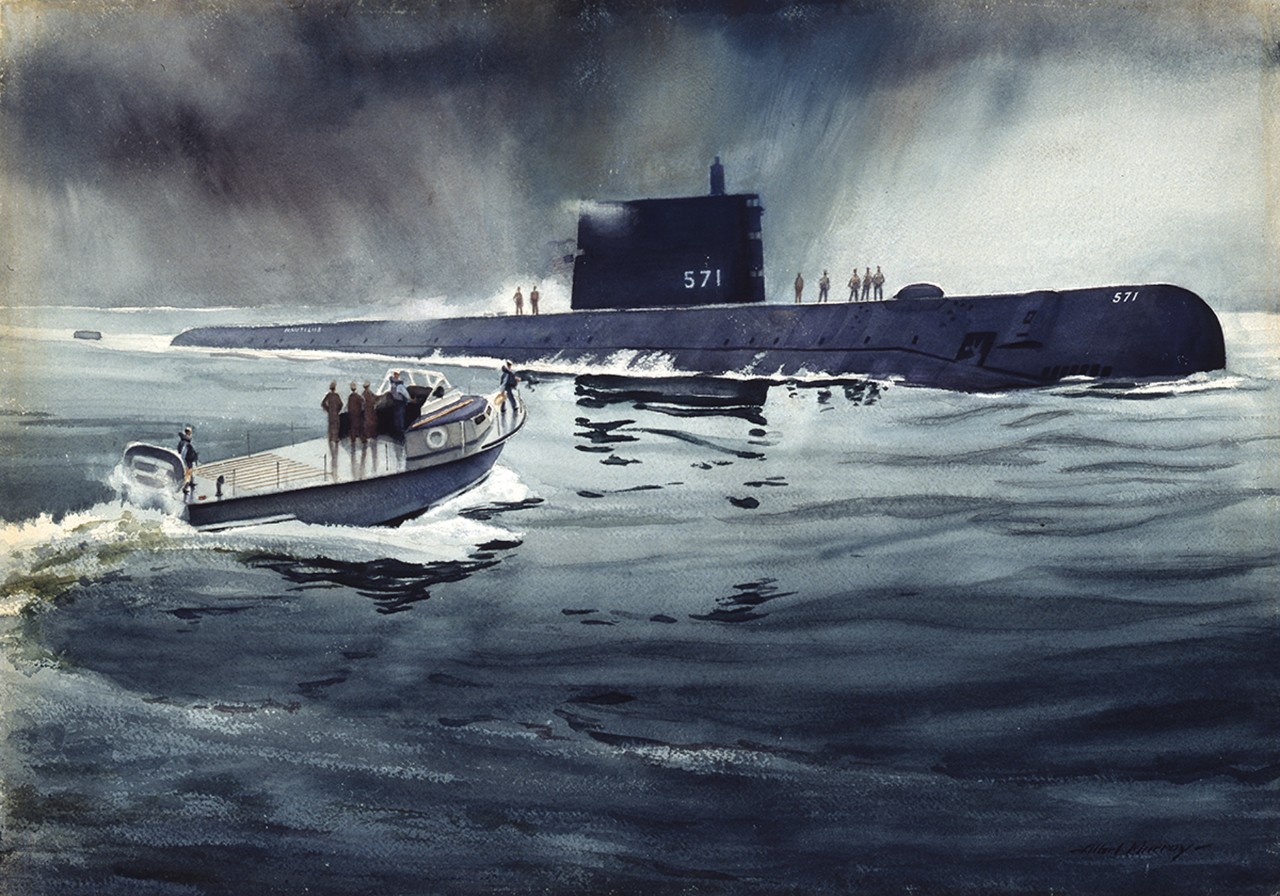Nautilus.jpg

Part 1 of 2 Parts
Research into small-scale nuclear energy conversion has made advances in reactor safety with the development of sodium-cooled reactors and molten salt nuclear technology. While the technology itself is feasible, a remaining problem is the need to negotiate to gain permission to pass through several channels and ports internationally.
The first developments of nuclear ship propulsion date back to the mid-1950s when the U.S. developed the nuclear-powered Nautilus submarine. In late 1959, the Soviet Union launched the nuclear-powered Lenin icebreaker. Since that time, all nuclear-powered vessels have been either directly or indirectly connected to a national military or navy. Now, recent advanced in nuclear technology raise the possibility of commercial propulsive applications.
Concerns about carbon emissions in the maritime sector have stimulated research and development into a variety of alternative fuels and ship propulsion technologies. Alternative fuels such as liquefied petroleum gas and methanol fuels sustain the operation of internal combustions engines. Other fuels such as hydrogen and reprocessed ammonia support operation of fuel cells that can produce electricity for propulsion. Some new types of small-scale nuclear power solve the problem of reactor cooling with high pressure water or high-pressure helium gas. Broad acceptance of nuclear power commercial ships depends on convincing people that contemporary nuclear reactor technology has achieved greater safety than older reactor designs.
Nuclear disasters such as Three Mile Island (United States), Chernobyl (Ukraine) and Fukushima (Japan), as well as growing stockpiles of spent nuclear fuel have caused a great deal of public opposition to the expansion of nuclear power. Traditional commercial power reactors are cooled by water. Some modern high-temperature use helium gas at high pressure for cooling. Structural failures of high-pressure water-cooled or gas-cooled reactors have catastrophic results. There have been recent developments that resolve the pressure problem by cooling the reactor with a liquid metal that melts at two hundred- and ten-degrees Fahrenheit and remains liquid up to one thousand four hundred- and seventy-degrees Fahrenheit at atmospheric pressure.
Another new nuclear technology involves adding nuclear materials to a molten salt. This also resolves problems caused by cooling nuclear reactors with high-pressure steam or gas. Molten salt nuclear material becomes liquid at about seven hundred degrees Fahrenheit but is solid below that temperature. Some developing nuclear technology is able to reprocess semi-spent nuclear fuel. If there is a rupture in a molten salt reactor, the temperatures will fall and the molten salt fuel mixture will solidify. This increases the safety and suitability of molten salt reactors for commercial ship propulsion.
Green production of hydrogen requires electricity to power electrolysis which splits hydrogen from oxygen. Modern electrolysis systems achieved between sixty five percent and seventy five percent efficiency. Solid oxide fuel cells are able to convert hydrogen to electric power at between fifty five percent and sixty five percent efficiency. Overall, the efficiency of energy conversion from electricity back to electricity is between forty-five and fifty percent. A nuclear power plant can produce electricity of about thirty six percent efficiency from nuclear fuel to transmission line. This yields about eighteen percent peak overall efficiency from power station via hydrogen and fuel cell to ship propeller.
Please read Part 2 next